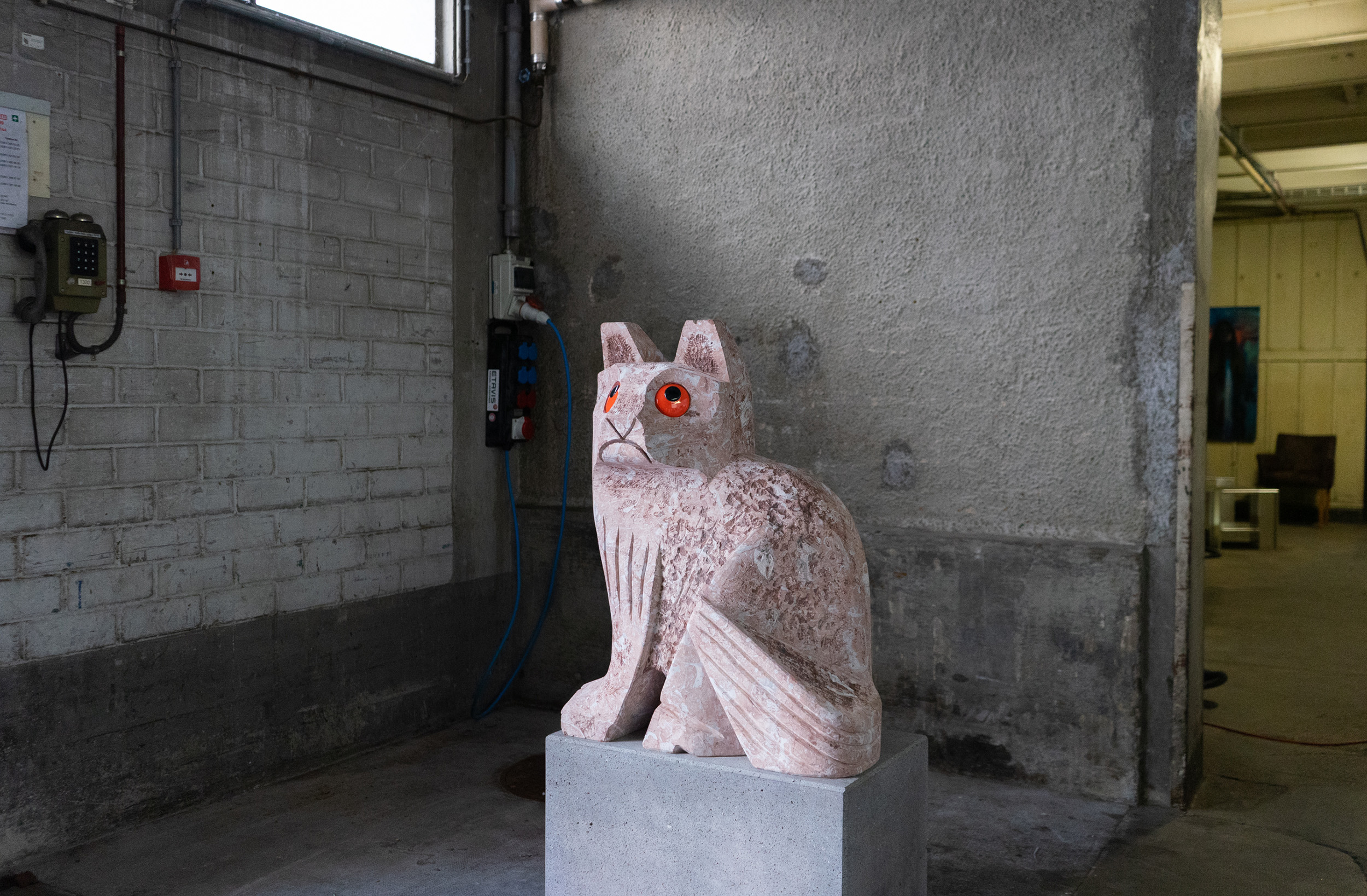Artists Exhibitions Beyond – Sierra in Appenzell

„From dishes to personified penises“, excerpt from a talk through the exhibition ‘Corniche’ by artist Francisco Sierra at Kunsthalle Appenzell with Director and curator Stefanie Gschwend
STEFANIE GSCHWEND: The exhibition is called Corniche. The term refers to a steep cliff road with a particularly beautiful panorama. Why did you find this title appropriate for your solo exhibition at Kunsthalle Appenzell?
FRANCISCO SIERRA: Corniche as an exhibition title has been in my mind for years. I like the analogy to my work; I often negotiate the seductive potential of realistic painting, of apparent beauty, and I’m interested in the border where it could all come crashing down. Since the landscape in Appenzell is considered very identity-forming and it has one or the other curve, this distant concept of the cliff road now seemed fitting for this exhibition.
SG: The paintings (from room 1 in the exhibition at Kunsthalle Appenzell) have in common that you painted them from objects. In what process do they come into being?
FS: As with most of my paintings, a ballpoint drawing is the starting point. These drawings, which I call bolígrafo (I don’t like to use the term sketch, because for me they are also finished works) serve me as a template for the models. Which object or situation will lead to a drawing, and which drawing will eventually go through a further process to become a painting, is a very intuitive process that is quite difficult to describe, as it contains a physical component as well, a kind of restlessness that manifests itself. I form the models out of unfired clay, paint and varnish them (not always, see Ancestors [2014]) and stage a photograph, which finally becomes the template for the painting. This process, which actually leads from 2-D to 3-D and back again, allows me great freedom within (so-called) photo- or hyperrealism. Only I know the reference then.
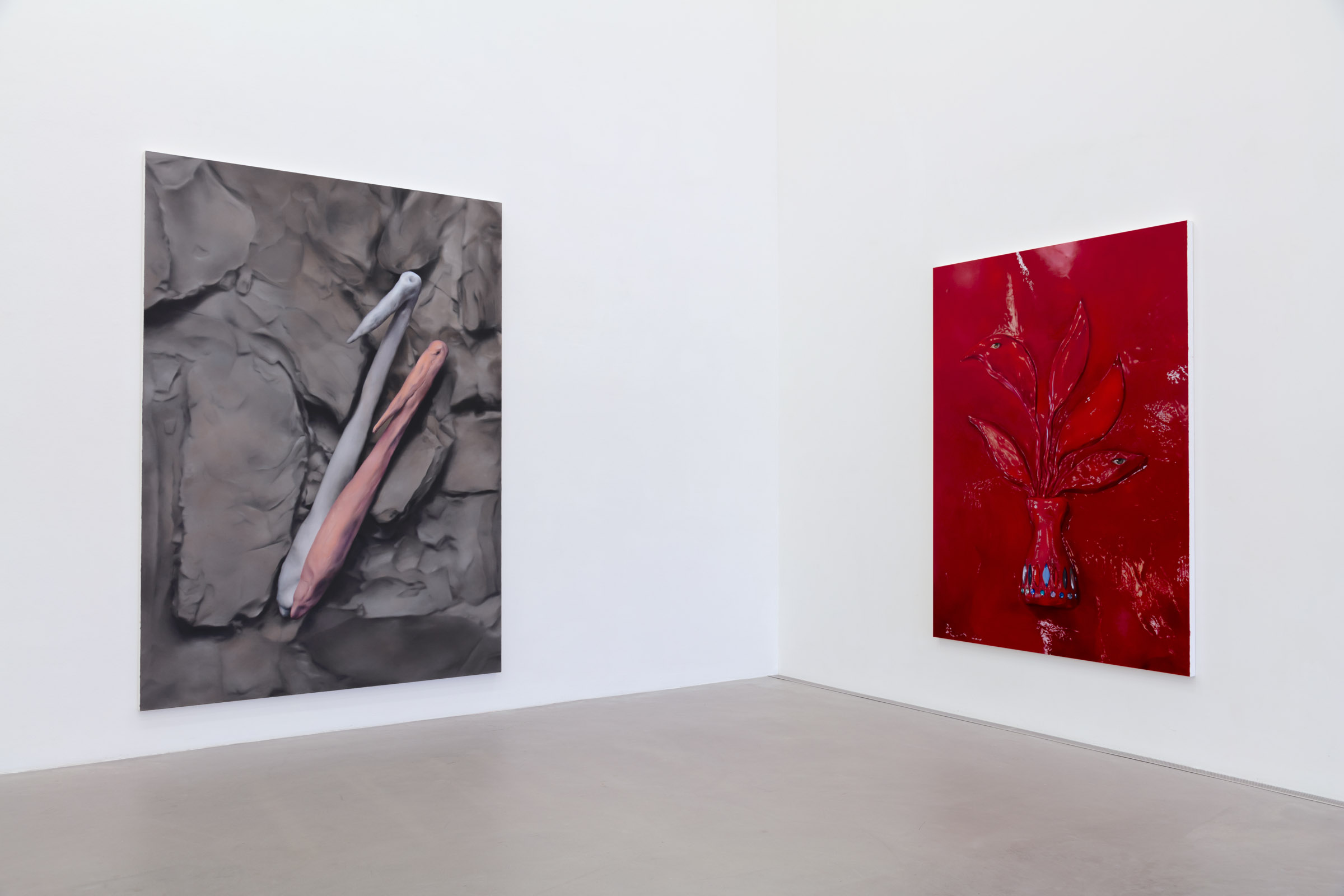
at Kunsthalle Appenzell
Photo ©Kunsthalle Appenzell, Urs Baumann
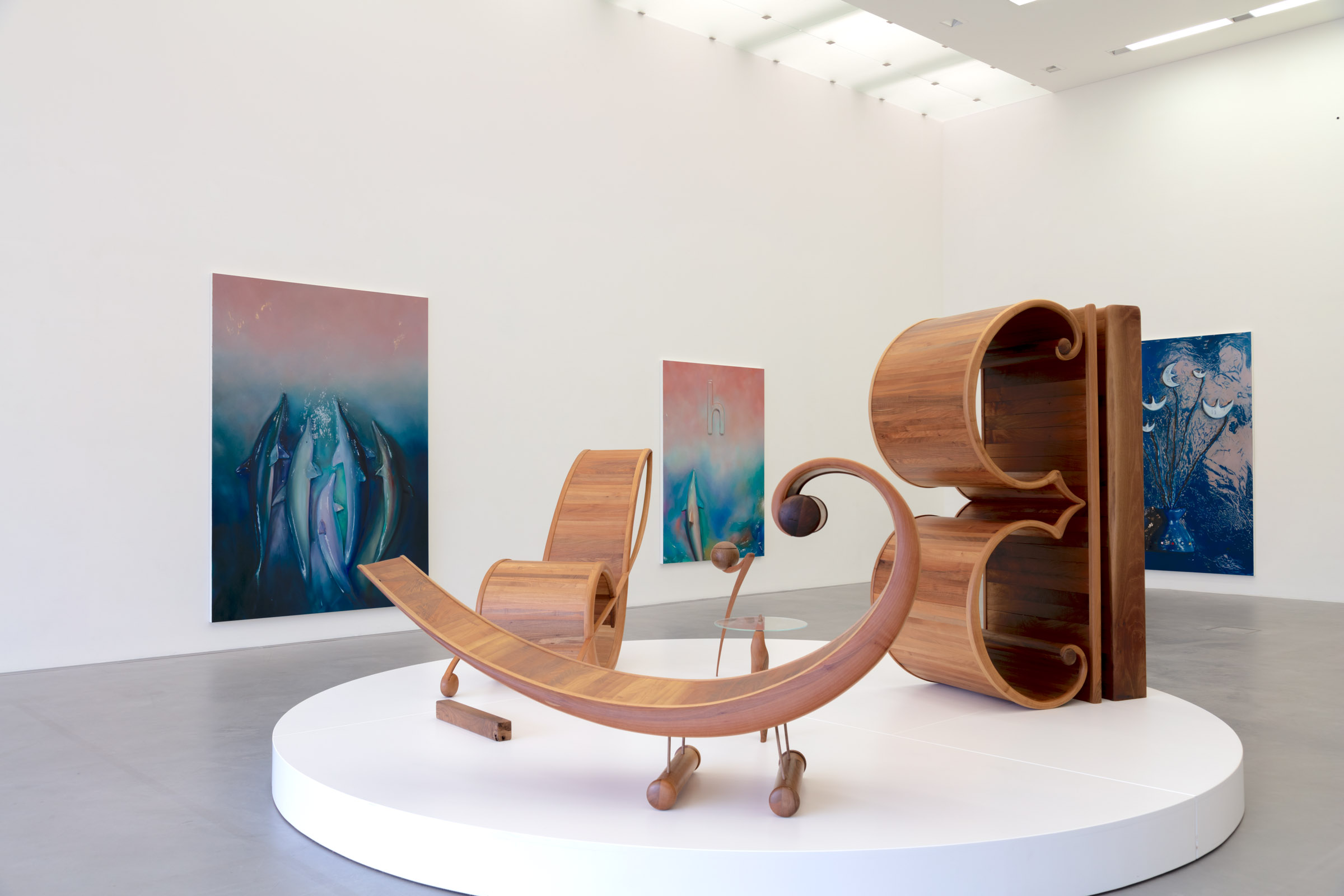
Photo ©Kunsthalle Appenzell, Urs Baumann

Schnee Oylen, 2023
Oil on canvas, 240 x 195 cm
Photo ©Kunsthalle Appenzell, Sebastian Verdon
SG: The glossy surfaces are visually captivating and give the images a three-dimensional effect. On the one hand, they are universal or decorative objects from everyday life, on the other hand, they are things that are present in our visual vocabulary. The familiar is immediately contrasted with the artificiality of the representation. What interests you about interweaving the real and the artificial in a painterly way?
FS: I don’t think about it that much, I must confess. These images arise in my head and then find their way. I have developed recurring procedures over the years, but each pictorial idea comes with its own realization. It would probably be too easy for me otherwise. But the visually captivating, as you call it, is also something I do for myself. Painting the shine and feigning three-dimensionality always gives me a lot of pleasure.
SG: There are many allusions to music; next to visual arts another important part of you, since you are a trained violinist.
FS: Although both disciplines (this term captures it quite aptly) have many parallels, they are very far from each other in real life. I resisted integrating musical elements into my work for a long time because it was unnecessary and forced. At some point it happened all by itself. Today I play the violin more often again. I understand many things better than I did just after my studies.
Still, I am very happy to have completed this training. I benefit from it even today, but this is certainly also due to the far-sightedness of my teacher at the time, Karen Turpie, who had a holistic approach.
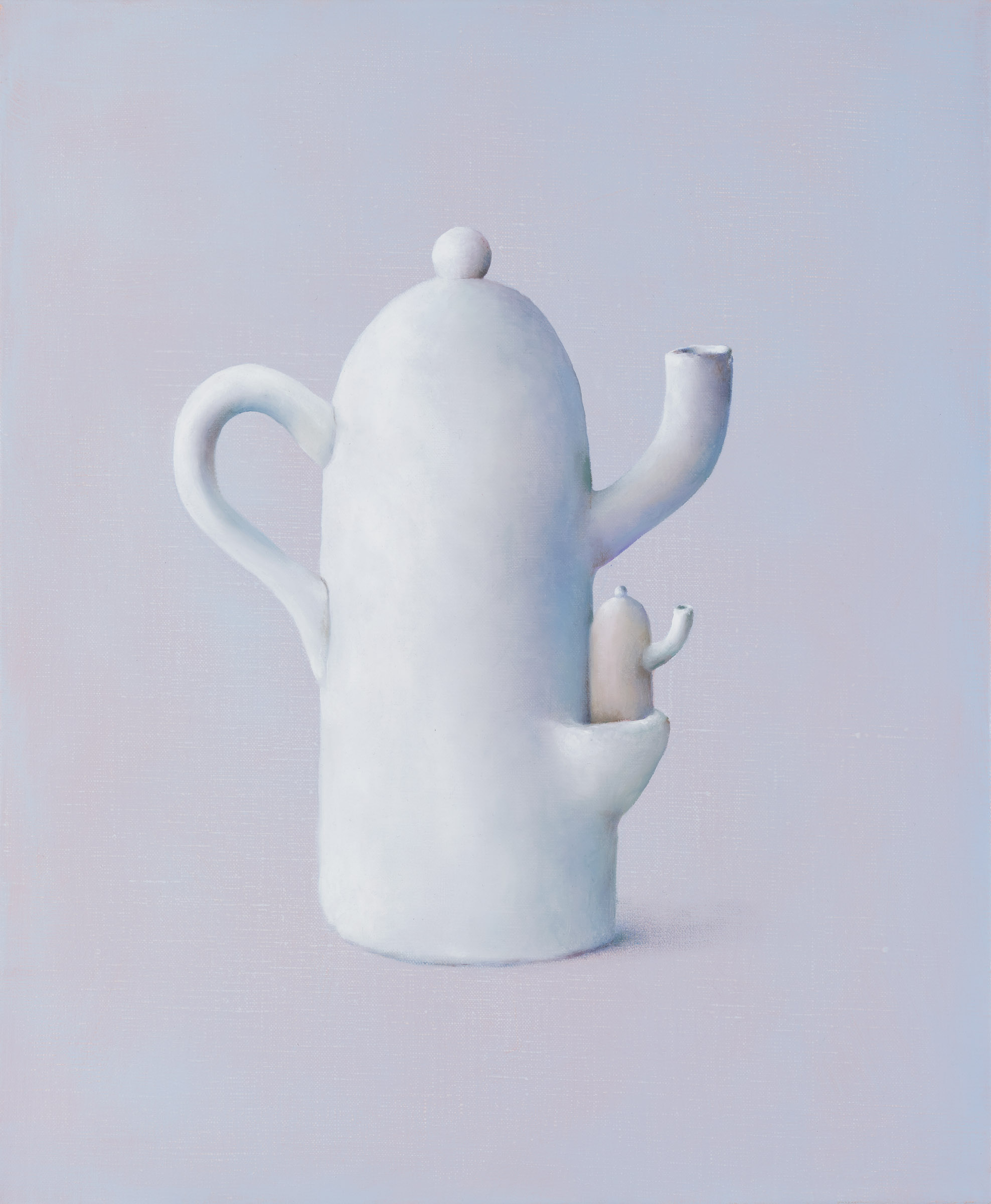
Untitled, 2020
Oil on canvas
55 x 46 cm

Toad, 2009
Gouache on paper
26 x 36 cm
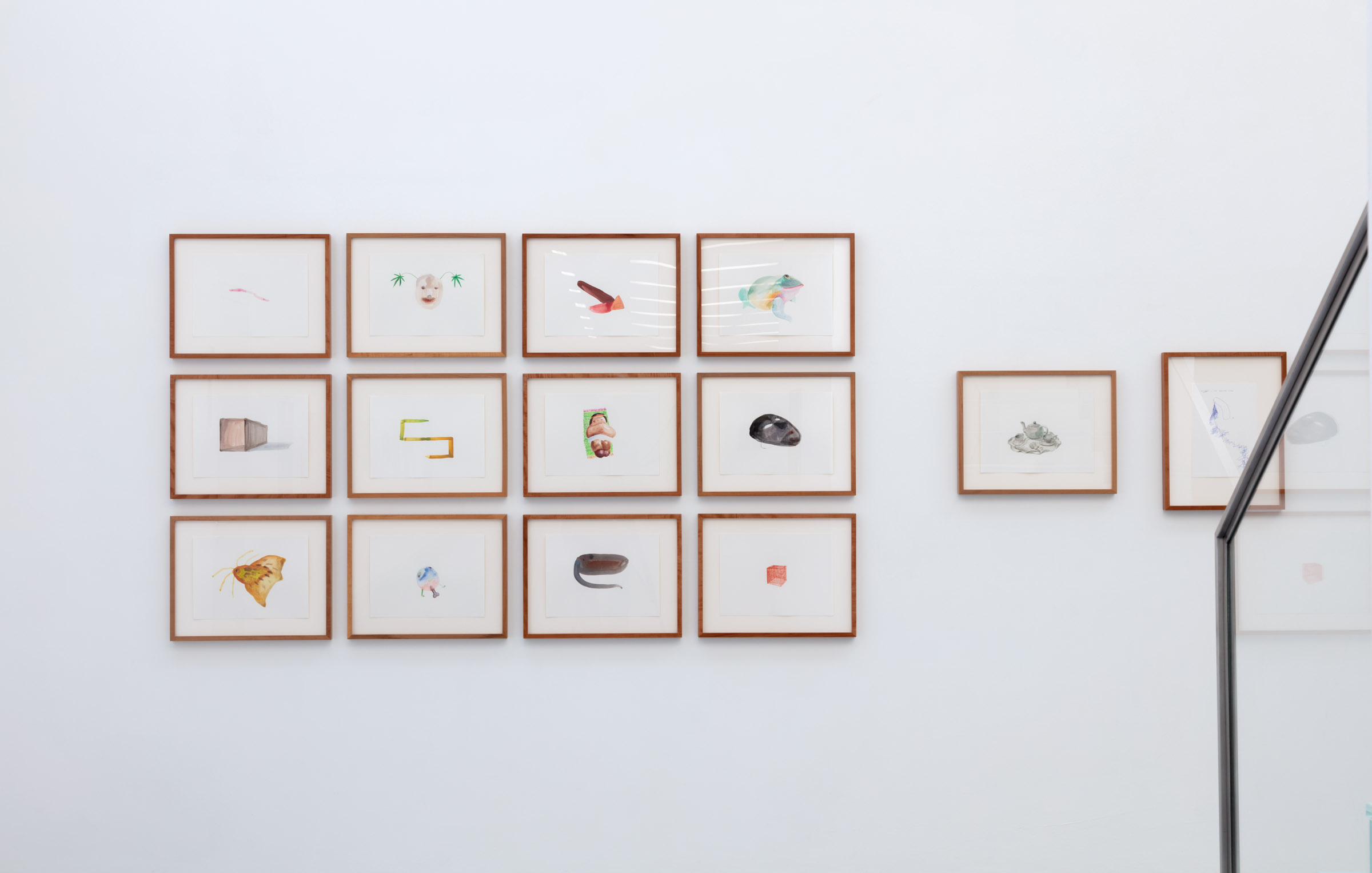
at Kunsthalle Appenzell
Photo ©Kunsthalle Appenzell, Urs Baumann

at Kunsthalle Appenzell
Photo ©Kunsthalle Appenzell, Urs Baumann
SG: You usually portray banal or sometimes offensive things—from dishes to personified penises or excrement—which you elevate through a technically precise realisation and their placement on the canvas, where the subjects are often detached from the background. How do you arrive at your motifs?
FS: I have the great fortune not to be forced to actively search for ideas for paintings and to always be a little behind in the execution. A lot of things come about through almost automatic drawing, wandering around, on the internet, in a secondhand shop—something can come up anywhere. I try not to set myself any restrictions, so it can also come to unattractive motifs, but these are also part of our world. I believe that I see a potential for images in many things, without judgement as to whether they are considered high or low. This leads to an entanglement that in turn challenges our habits of seeing and thinking. And sometimes it happens that our children surprise me and bring me something that they have only made so that I can paint it.
SG: In the top and last room you show forty-four guppies, Guppy (2023): small wooden panels made of wine crate wood, painted with beautiful tropical fish. You have chosen to show them on wall plinths that stick out about ten centimeters from the wall and look like architectural elements attached to the wrong part of the building. What brought you to this pairing of painting and plinth?
FS: I do the opposite of the lower room here, so the miniatures are staged to the maximum and literally put on a pedestal. With the guppies, this repeatedly thematized relationship between decoration and art is decidedly palpable. They have basically become living decorative objects that people can breed in all directions. Nevertheless, they still belong to the same species. I am fascinated by this contradictory idea of diversity forced by man. A diversity that is desired in animals but remains problematic among humans in terms of acceptance or tolerance.
This excerpt is part of the booklet accompanying the exhibition ‚Corniche‘ a solo show with Francisco Sierra at Kunsthalle Appenzell until June 11, 2023.
Error. No content found for Slider




